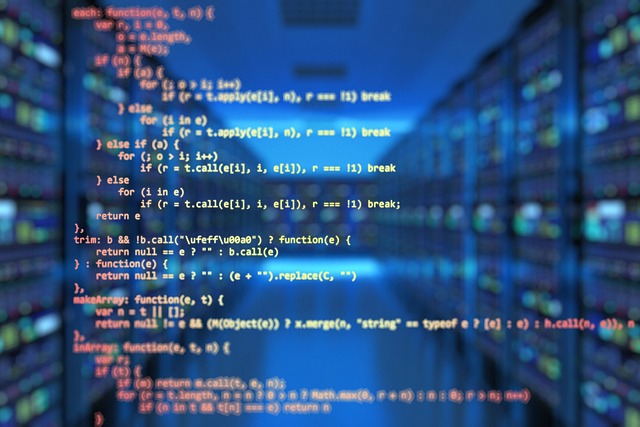Table of Contents
Envisioning software in 2500 opens up a world of limitless possibilities, where current technology challenges are mere past peculiarities, allowing for a fascinating future.
1. Seamless Human-Computer Interaction
In 2500, advanced neural interfaces will blur the line between humans and computers, enabling direct brain-to-computer communication. This will make keyboards and screens obsolete, enhancing efficiency and intuitiveness. This technology will reduce the learning curve, allowing even the youngest to navigate systems effortlessly. Innovations in bioengineering and neuroscience will drive this transformation.
2. Intelligent Autonomous Systems
In 2500, software will feature autonomous systems with advanced intelligence, learning and adapting independently. Deep learning and quantum computing will enable these AI to manage complex tasks, reducing human error and enhancing efficiency. This autonomy will redefine productivity, workforce, career paths, and societal norms, leading to new career paths and societal norms.
3. Hyper-Personalized Experiences
In the future, software will offer hyper-personalized user experiences shaped by continuous real-time data collection. Every individual’s preferences, behaviors, and needs will be cataloged and analyzed, allowing software to adapt and respond with tailor-made solutions. Whether it’s entertainment, shopping, or education, the software of 2500 will deliver uniquely customized experiences that evolve with you. Privacy concerns will be managed by advanced encryption algorithms ensuring user data is both secure and utilized ethically. Such a level of personalization will foster deeper user engagement and satisfaction, making interactions with digital platforms more meaningful and impactful.
4. Virtual and Augmented Realities
By 2500, virtual and augmented reality will be integral parts of everyday life. Highly immersive virtual worlds will provide platforms for social interaction, education, and business, making physical locations less relevant. Augmented reality will overlay digital information onto our physical environments with perfect synchronicity, enhancing everything from navigation to museums. These technologies will also play a transformative role in healthcare, allowing remote surgeries and virtual therapy sessions. The convergence of these realities will enrich our lifestyles, providing endless possibilities for interaction and learning, and redefining the very fabric of our day-to-day existence.
5. Evolution of Coding Languages
As we move towards 2500, coding languages themselves will evolve, becoming more abstract and intuitive. Natural language programming will likely become the norm, where humans can write code using their everyday language, thus breaking down barriers between technical and non-technical users. This will democratize software development, allowing anyone with a good idea to bring it to life without needing extensive technical knowledge. The software will be self-optimizing, with AI-driven algorithms improving and refactoring code in real time, ensuring optimal performance and security. This evolution will spawn a new generation of developers, fostering innovation like never before.
6. Interstellar Software Ecosystem
Humanity’s expansion into space will lead to the creation of an interstellar software ecosystem. These systems will manage space stations, interplanetary travel, and potentially even life-supporting environments on other planets. Reliability and autonomy will be paramount, as human intervention in deep space will be limited. Software will be designed to operate flawlessly under extreme conditions, utilizing redundant systems and self-healing algorithms to ensure continuity. This interstellar software will open new frontiers for research, commerce, and habitation, making humanity a truly multi-planetary species and bringing previously unimaginable scenarios into reality.
7. Ethical Considerations and Governance
The advance of software in 2500 will necessitate robust ethical frameworks and governance structures to guide its development and deployment. Balancing innovation with the potential for misuse will require international cooperation and stringent regulations. Ethical AI will be a cornerstone, ensuring that autonomous systems make decisions aligned with human values. Data privacy, security, and the potential for digital discrimination will be central issues, demanding constant vigilance and adaptation of laws. The establishment of global oversight bodies will be crucial in maintaining the ethical integrity of software, ensuring it serves humanity’s best interests.
8. Environmental Impact and Sustainability
Sustainability will be a critical focus for software development in 2500. With the planet’s resources limited, software will play a vital role in managing and optimizing resource use across various domains. Smart grids, efficient waste management, and sustainable agriculture will be driven by sophisticated software solutions. Real-time monitoring and data analytics will help identify and mitigate environmental damage, ensuring a balance between technological advancement and ecological preservation. Green coding practices will be standard, with energy-efficient algorithms and hardware systems designed to minimize their environmental footprint, aiding the global effort to combat climate change.
Conclusion
The vision of software in 2500 is a tapestry woven with threads of advanced intelligence, personalization, and sustainability. Humanity stands on the cusp of unprecedented technological evolution that promises to enhance efficiency, expand capabilities, and deepen our connection with both the digital and physical worlds. As we navigate this future, ethical considerations and global cooperation will be fundamental in ensuring that these advancements benefit all of humanity. The convergence of technology with daily life will transform how we live, work, and interact, heralding an era where possibilities are not limited by imagination but are expanded by the very tools we create. The journey to 2500 is as exhilarating as it is challenging, inviting us to dream and innovate while remaining grounded in our collective responsibility towards each other and the planet.

